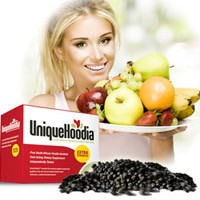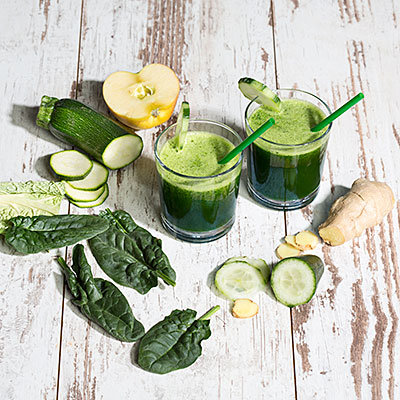Lose Weight > Weight Loss Tips > Weight Loss Articles > Fraudulent Hoodia And WeightLoss-What You Must Know Before Buying
Fraudulent Hoodia And WeightLoss-What You Must Know Before Buying
Here is the reason why.
There are dishonest vendors who will display the lot numbers tested on their website from a lab considered to be very reputable. But, the only way to know that this constitutes irrefutable proof of their hoodia product's strength is if the company permits ongoing, anonymous, and random testing of the actual product that is sold to the consumer. This should be completely verifiable, and also the testing should be done where the vendor doesn't know the exact testing place, where the products are bought from nor when the product was purchased. The results from such testing should be displayed right on the testing laboratorie's websites.
Question #2 Purity? Is there an easy way to check to see if the hoodia product is made stricly from pure South African Hoodia Gordonii? There should be no additives or fillers.
There is a way to determine the purity of the hoodi gordonii. Looking at the label, check under the "Supplement Facts" section on the label. If it declares specifically that there are no additives, this will be apparent by your seeing the word "None" in the "Other Ingredients" section of the label. If there is anything else listed, then it's not pure hoodia.
Sometimes a manufacturer will list the fillers and additives as "Other Ingredients". This is known as the "O.I." trick. If the manufacturer lists the other fillers and additives as "other ingredients"- then they can legally say that the product is true gordonii.
You see, the government allows the diet supplement industry to use certain "flow agents" to help simplify the manufacturing process.
Through the use of magnesium stereate, cellulose, silica, and other similar ingredients, the manufacturers are able to exploit the loophole in the law regarding "other ingredients"- at YOUR expense.
But with today's new high compression encapsulation machines, it's no longer necessary. to load capsules with fillers-and still call it pure. It may cost more, but it's the right thing to do.
Now you know how to avoid this common "bait and switch" practice that the less than honorable companies use when they give the lab a "souped up" supposedly authentic sample, yet sell you, the consumer, a watered down product.
Question #3: Does the place that you are wanting to buy the hoodia from claim it to be of South African origin, or just say "hoodia"? There are over 20 varieties of hoodia, but only the one from South Africa has been proven to reduce the caloric intake of humans. If you see "Chinese Hoodia" for example- I wouldn't buy it.
Question # 4 ACTIVE PART- "Is the Hoodia I buy made from the biologically active part of the Hoodia gordonii Succulent. Does the vendor use only the peeled stem of the Hoodia gordonii plant?"
You shouldn't buy hoodia gordonii from any company using the "whole plant" or anything that isn't purely the "peeled stems. These products would automatically have at least 50% less of the hoodia's active ingredients necessary for effective appetite control.
You don't want the root, nor the flowers, nor the bark. The P-57 part of the plant- or "peeled stem" is the part of the hoodia plant that you want.
Question # 5: POTENCY - Am I sure the Hoodia I buy is of the highest potency possible. Does the company or its farmers patiently cultivate the Hoodia succulents for at least 3-1/2 years before harvesting the stems?
Hoodia that is milled from immature plants can test positive for hoodia, but yet still have very low levels of P-57 which is the ingredient that suppresses the appetite. Also, hoodia loses strength when it's kiln dried or in open sunlight. Also, potency is lost when the hoodia is milled above a certain micron level.
Related Articles
-
The Fat Burning Furnace - Lose Weight Really Fast with Half the Effort!
How to Lose 26 Pounds in 7 Weeks! Do you want a shortcut to weight los
-
How To Burn More Calories To Lose Weight?
Everyone knows that we need to burn more calories than we eat to lose
-
How to Lose Belly Fat Fast - 8 Tips
Of all the problem areas women face when they lose weight, belly fat i
-
Weight Loss Diet Drugs
Most people tend to select a simpler way to solve a problem without
-
Three Powerful Weight Loss Approaches That Add Leverage To Your Endeavours
We realize what it is like looking for quality content relating to
-
How To Lose 2 Pounds In A Week And Get That Physique You Ought to have
When you start considering how to lose 2 pounds in a week, hunger p
- DON'T MISS
- Opulent herbal solution for curing obesity
- Weight Loss: Its Not Always What You Eat, But What You Dont Eat
- A Pursuit To Choose The Best Diet Pill
- Does Weight Loss Hypnosis Work?
- Ayurslim by Himalaya & get the perfect figure naturally
- Safe and natural ways for effective weight loss
- The Best Cardio Workout For Beginners to Six Week Body Makeover
- HCG Diet Texas – What Makes It The Best Weight Loss Program
- Fast Weight Loss and Exercise - Pay Now or Pay Them Later!
- How To Reduce Obesity - Effects And Natural Treatment




